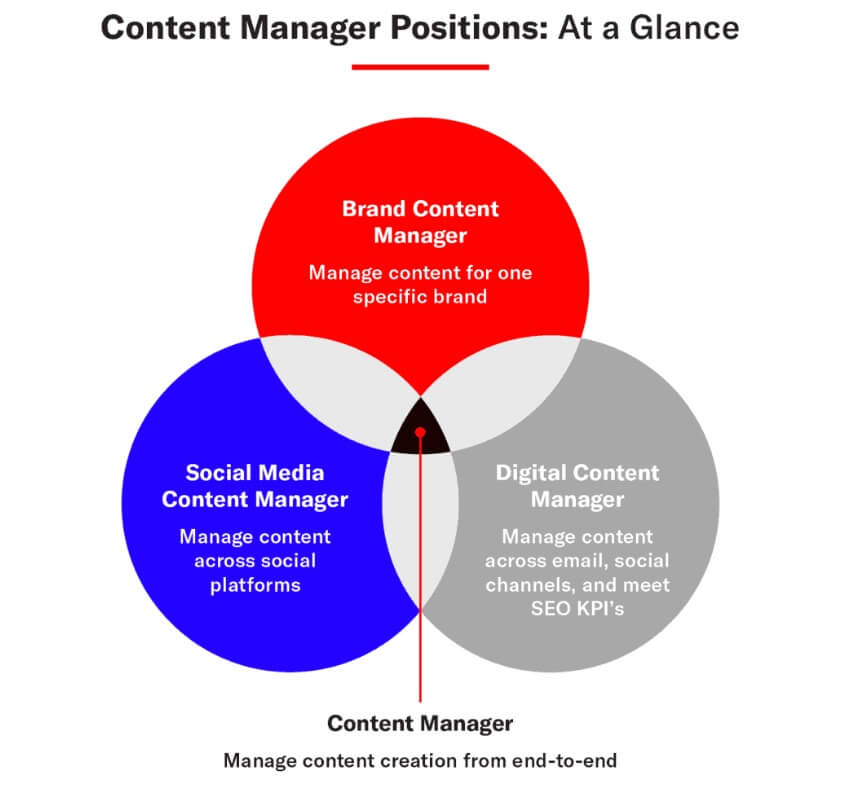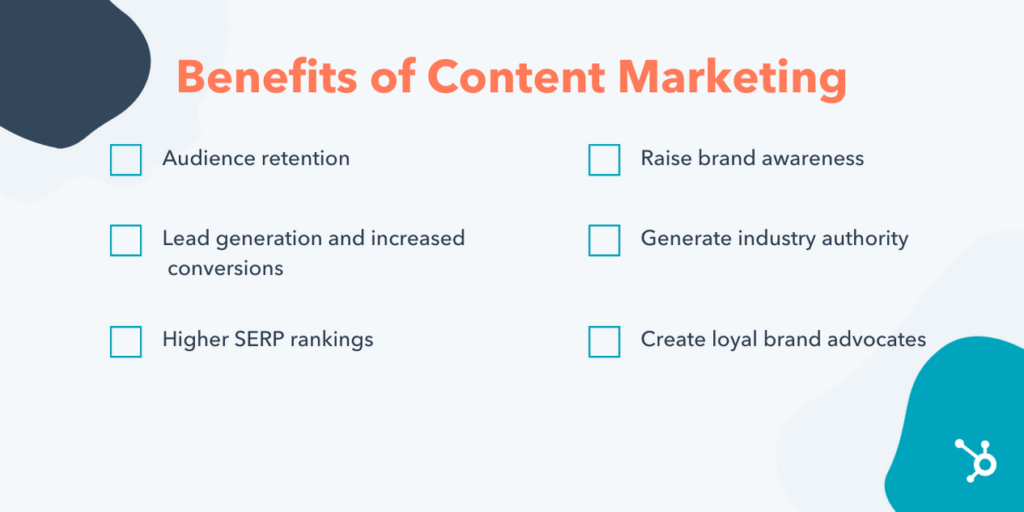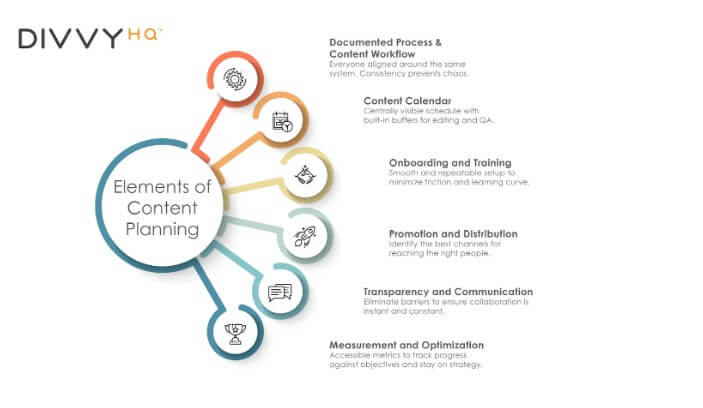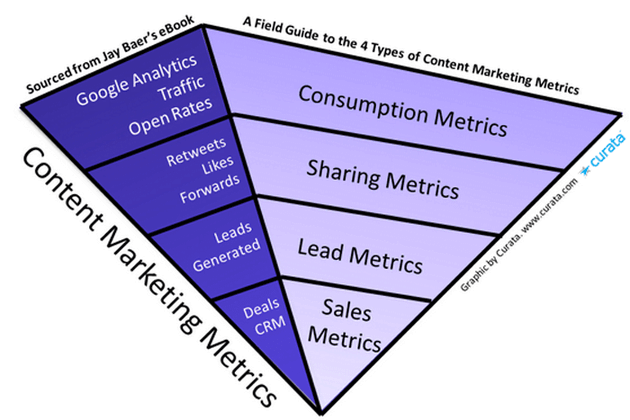7 Tips for Success as a Content Marketing Manager

When B2B buyers research their purchasing options, they always have specific questions to address. They’re looking for detailed, useful information – and they’re going to spend more time engaging with sellers who can provide it to them. Content marketing is the umbrella term that captures all of the processes for creating and distributing this information. The individual responsible for shaping it all into an effective strategy is the content marketing manager.
Almost two-thirds of successful B2B organizations have a defined content marketing strategy. Under the right direction, content marketing will help you generate new leads, drive sales, keep your existing customers engaged, and establish you as a leading voice in your field.
The question is, what does it take to be a successful content marketing manager? In this post, we’ll take a deeper look at the role, why content marketing is so essential for B2B, and give you seven tips for success as a content marketing manager.
What is a Content Marketing Manager?
Content marketing managers are in charge of planning and executing a content marketing strategy. Their job includes:
- Planning marketing campaigns and strategies
- Developing a marketing content calendar
- Producing marketing content
- Dealing with SEO and social media distribution channels
- Conducting ongoing research on market trends and competitor activities to ensure that content stays fresh, timely, and relevant
- Managing the teams responsible for content creation and related projects

A content marketing manager needs to understand the brand’s voice, as the content they produce will play a significant role in shaping it. It’s also the content marketing manager’s job to monitor and analyze the performance of published content to determine ROI and optimize the strategy.
The most effective content marketing managers will have strong writing and editing skills, experience with digital marketing and project management, and leadership ability. Without a content marketing manager directing your efforts, you might end up with a library of ebooks and blog posts that never get read because they aren’t what your buyers are interested in.
Why is content marketing an essential part of B2B marketing strategy?
Two important facts about content marketing are that it’s cost-effective and it works. According to industry research, content marketing costs 62% less than traditional marketing activities while bringing in three times as many leads. Strong content drives traffic to your site by giving search engines better links to associate with your brand and giving audiences a reason to read, share, and discuss the material you’re publishing. It helps to position you in a thought leadership role and can foster a genuine sense of community around your brand and products. Great content marketing attracts high-quality leads and helps retain your existing customer base.

Of course, these best-case scenario results require a comprehensive strategy and a skilled team to deliver on it. With a high-level strategy driven by insights from your customer data, you can target specific audiences — and even individual decision-makers — with content that speaks directly to where they’re at in their buyer journey.
For your content marketing efforts to be successful, you need a content marketing manager to lead the team and set the pace. Here’s seven tips to get you started.
7 Tips for Success as a Content Marketing Manager
1. Your Content Needs a Goal and a Plan
The only way to know if your content strategy is worth whatever you’re spending on it is to be clear on what you’re trying to achieve. A plan outlining your goals and laying out a publishing schedule will help you maintain close alignment between your overall strategy and your content output.
Content intended to draw in new leads by answering questions about the fundamental concepts behind your product will look very different from content designed to increase customer retention by adding value for current users. It’s essential to keep your goals in front-of-mind when outlining and drafting content.
2. Understand Your Buyer’s Journey
Between the personas of the blank-slate new lead and the grizzled longtime customer, there is a vast population of potential buyers at many different stages in their buyer journey. Serving them with the perfect content at the right moment is key to persuading them to advance deeper into your sales funnel.
Often, sellers have great TOFU content, but fewer resources for knowledgeable customers trying to make a nuanced decision between several options. These sellers are probably getting good lead generation numbers that aren’t being matched by sales. By using tools that help you better understand what your buyers think through tracking and analyzing their journey, you can meet them with the information they need, exactly when they need it.

3. Great Content is Actionable, Adds Value, and Solves Problems
As it turns out, no matter how great your content is, most people aren’t reading it for fun. They’re on your site because they’re facing problems or challenges in their business, and they’re hoping you can solve them.
Your content is successful if it leaves them feeling like they learned something of value by reading it, they’re closer to solving their problem than before, and they have an idea of what steps are next. Content that aims to entertain the buyer or lecture them on what their buying priorities should be may get read if it is interesting. But it’s not going to convince buyers to keep coming back to you with the questions that really matter.
4. Content is Data, and Analytics Are Your North Star
Individuals can react to the same content in different ways, so there will always be a subjective element to content marketing. But that’s no reason not to mine your content and the customer behavior around it for all the data insights you can uncover. Following the data is one of the biggest keys to success with content marketing.
Your content marketing strategy should be undergoing constant refinement based on frequent data analysis. Employ analytics and buyer journey tracking that shows you traffic patterns, so you can tell if people are staying to read your content — and where they’re going after they’ve read it. It’s a good idea to employ A/B testing to determine how well similar pieces of content perform relative to each other. The data you glean can help you create a stronger brand voice and inform your content planning.

5. Help Readers Find Your Content by Optimizing It
Publishing brilliant works of genius in quiet obscurity is for poets and artists, not B2B companies. At the same time, taking out a full-page ad in the New York Times is probably overkill. The ideal split-the-difference solution is to make it as easy as possible for the right audience to find the content you’ve created for them on their preferred media channels. Simple, right?
While the quest for perfect SEO is not easy, there’s a lot you can do to make sure your content pops up in front of the right eyeballs. Most of it comes down to understanding your audience, their business issues, and how they like to browse, search, and network online. Also, don’t forget about headlines and graphics —showing up on the buyer’s news feed or search results is only the first step. You’ve still got to convince them to click through.
6. Make it Personal with Personalization
There’s nothing to stop you from providing visitors to your website with a custom-tailored experience that considers their personal and business demographics, their specific pain points and wish lists, and the stage they’re at in their buyer journey. Your only constraints are the extent of your knowledge about the customer and the depth of your content library.
Marketing strategies that involve content personalization are used by 79% of businesses that exceed their revenue goals. Having the tools required for the job is crucial to any personalization strategy, as they can map out the buyer journey in detail and identify the content that is most likely to lead to conversion at the right moment.

7. Repurpose and Remarket Content
Great content deserves an afterlife. If you’ve written a high-performing post about a perennial topic, there’s no need to let it languish in your archives. It’s a simple, high-ROI tactic to update and republish it for a fraction of the cost and effort of writing a new piece from scratch. This is especially true when you can easily syndicate it to new channels and platforms that haven’t seen it before.
Reincarnation of your old content is also an option. An engaging blog post can be brought back to life as a whitepaper, discussed in a podcast episode, revised for publication on a site like Medium, or turned into a video — the possibilities are almost endless.
Give the People What They Want
Every B2B buyer on the internet typing in search terms or clicking through link recommendations has a particular type of content in mind that they’re hoping to see. A great B2B content marketing strategy will ensure that you’re producing exactly the content your prospective customers are looking for, and putting it where they’ll find it. These seven tips will help any content marketing manager successfully create and implement a winning strategy that fills their pipeline.
Content strategy is critical in account-based marketing, which depends heavily on the strength of your ability to deliver highly relevant content with precise targeting and timing. Attribution-based personalization solutions can lift your conversion rates by providing you with the data-driven insights you need to achieve this level of content customization. They’re a powerful addition to any content marketing manager’s tool kit.